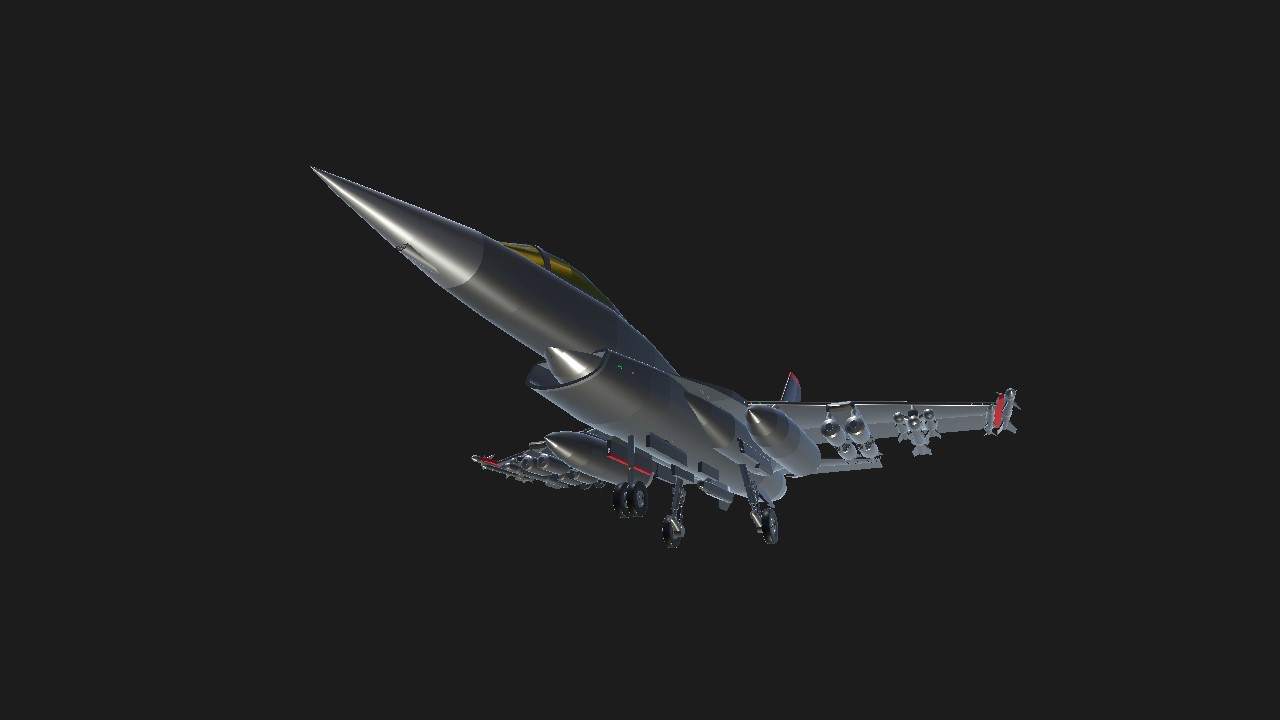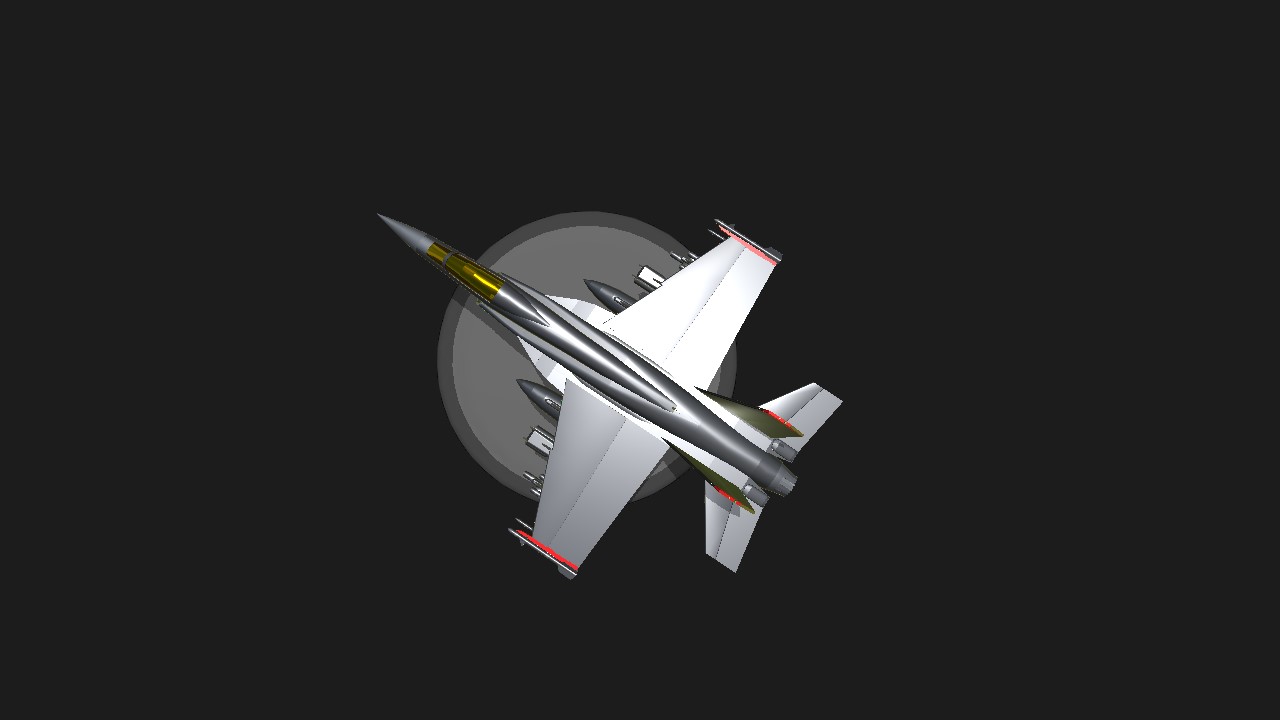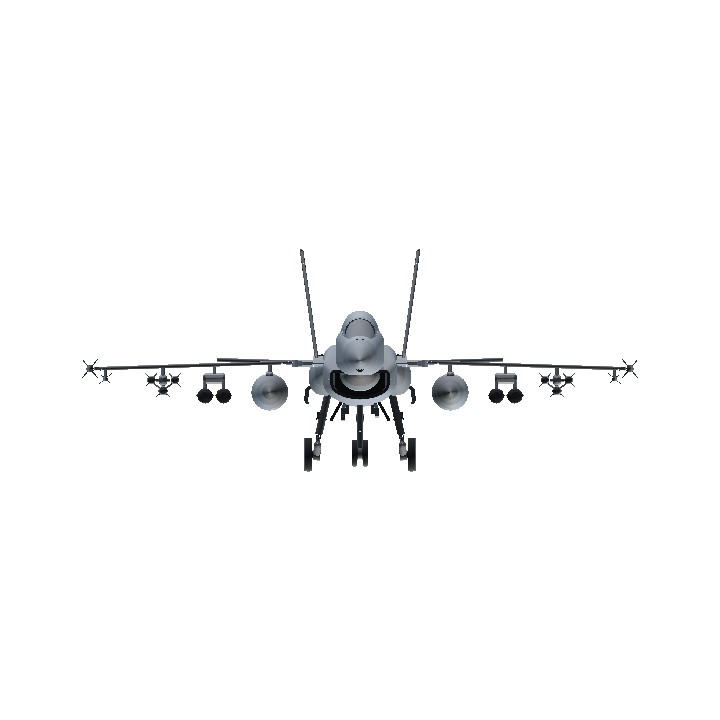Behold, after design conflicts and re-evaluation

NeiconNicress ATF-60 (Advanced Tactical Fighter Type 60) Roon


Brief Information
The NeiconNicress ATF-60 Roon (named after KMS Roon) is an Odrasean family of single-engine, supersonic lightweight multi-role fighter aircraft capable of all-purpose strike attack, intercept, interdiction and combat roles, with fly-by-wire controls, also intended for the use of electronic warfare, reconnaissance, as well as the capability to land in aircraft carriers.
Neicon Aerospace at first, was the head of the ATF-60 program as a response to the ROADF Modernization Act in 1991 - by then, Nicress, Boeing, and the OAC helped Neicon to develop the ATF-60 by its prototype airframes, as the XFA-60 Montpelier, and the XFA-62 Zerstorer.
After the merger to NeiconNicress in 1998, the XFA-62's finalized airframe became the ATF-60, which entered service with the Royal Odrasean Air Defense Force in 2004 as the ATF-60A, followed by the ATF-60B, C, and D variants for exports - such as the Royal Fabellan Air Force, Karyan Union Air Force, the East Valestian Air Force, and other air forces in order. The E strike fighter variants also entered service with the ROADF, and RFAF with future orders from the others as well. A maritime strike version (ATF-60M) entered service with the RFAF first, with future orders from the Royal Odrasean Naval Force's Air Wing.
History
It was the Post-Crusade era, yet wars still blare out from other states. Others need air support, however the aircraft in store were old, and some may not be worthy of it's systems.
The ATF, PN60 (Advanced Tactical Fighter, Project Number 60) program began in May 1993, as an answer to the Royal Odrasean Air Defense Force's Modernization Act in 1991, to replace older aircraft such as the McDonnell Douglas A-4O Skyhawks, the LTV A-7 Corsair IIs, the Cormack Type 34O Hermes, and other older aircraft. Government officials need to work on the firm, because of the amount of new weapons were made.
Before the ATF-60 programme, the government and the Odrasean Ministry of National Defense (with 45% aid from the Royal Odrasean Defense Forces) has received offers from each of their ally countries:
The Fabellan Federation, for the Cormack and Haryav's next generation fighters,
The Karyan Union, for Poyasakai's experimental multi-role fighter for exports,
East Valestia, for the Valestian Aerospace Development Complex East Divide's VXMF-27MR,
and the Odrasean Aeronautical Corporation's FA-37 family of multi-role fighters (Not the F/A-37 Talon, though.)
All were approved for the fleet, yet one is giving the RODF original offers.
However, in May 12, 1993, Neicon Aerospace planned to develop a new fighter as to replace their own older planes in the ROADF's fleet. This project was known as MRFP 060 (Multi-Role Fighter Project Zero-Sixty), until when multinational companies became interested on the project, thus the ATF PN60 project has began its operations.
Two airframes were designed by other aviation designers, one being from Nicress as the the XFA-60 Montpelier (named after the USS Montpelier) then by OAC (with the help of Nicress and Boeing) as the XFA-62 Zerstorer/Hornet-E (the Zerstorer came from the word "destroyer" in German, while the Hornet-E was a derivation for the F/A-18 Hornet family). Both were being supplied as designs, and the other artifacts were done by Neicon themselves.
the Nicress XFA-60 Montpelier airframe - June 21, 1993

Nicress developed an airframe designed for agile maneuvers and higher performance, which is the XFA-60 technology demonstrator.
The XFA-60 experimental demonstrator, MAI designation Montpelier, features the inlet located at the bottom (on a diverterless supersonic design), and a canard-delta configuration. The XFA-60 airframe is powered by two MalcomSverovsk GN1200 afterburning turbofan engines, and can reach up to Mach 2 supersonic speeds.
However, there were problems encountered for 6 XFA-60 prototypes, which have pilot errors and the plane's weak unstable structure, yet one XFA-60 airframe caught flames in midair. The pilot that time ejected safely, with no injuries. After 4 years of evaluation, the XFA-60 airframe was cancelled, moving on with the next XFA-62 airframe.
the OAC-Nicress-Boeing XFA-62 Zerstorer/Hornet-E airframe - September 4, 1997

After the cancellation of the XFA-60 airframe, OAC and Boeing has provided proposals to compensate for the previous airframe's cancellation.
The XFA-62 airframe, MAI designation Zerstorer, then nickname Hornet-E by Boeing, as a deriative for the F/A-18 Hornet's design since its wings, twin tail and other artifacts strikingly resembled the Hornet itself. The XFA-62 kept the same inlet position and the diverterless supersonic configuration. The fuselage became slightly longer, and it renounced the use of the canard-delta configuration, to go on with the traditional configuration. The XFA-62 now uses a stronger landing gear derived from PoiyaYudatsi's J.24 Atago, for plans of future naval usage - or rather, to be carrier-capable. Instead of being powered by two engines, she is set to be powered by a single General Electric F404 engine, to fly upto 1400mph (Mach 1.7/8 exact) max speed.
After several tests, the XFA-62 suffered no damage and error at all, yet remaining unscathed. 5 XFA-62 prototypes were built were also successful - this time with better avionics, minor changes to the airframe, and also to be powered by the General Electric F414G engine. Each succeeding prototype had its internals evolving according to its power.
All were successful, leading to re-evaluation to the XFA-62 airframe, then the final pass to the ATF-60 programme.
Final Evaluation
In June 1998, Neicon Aerospace and Nicress Company merged into NeiconNicress, as Odrasea's premier aerospace firm next to OAC. The XFA-62, now being chosen as the ATF-60 this time was given an official MAI designation; Roon, as named after the German heavy cruiser Roon itself.
The production version has differences from their prototype variants; she, using Raytheon's, Valestech's, Thales', and multinational internals, being powered by the General Electric F414R-110 engine, armed with wide selection of armaments (+ the GAU-8), even better avionics, and its next variants - the ATF-60E strike fighter variant, ATF-60MS carrier-borne maritime strike variant, the ATF-60TVC thrust vectoring demonstrator, and the ATF-60EX, the enhanced version of the ATF-60.
The ATF-60 family is a success to the Odrasean aviation industry after post-Crusade era, which captured minds of pilots willing to protect the skies, but also land and sea.
Powerplant
General Electric F414R-110
Essentially the F414G, but designed for the Roon. Minor changes were added to it. This also has the ability perform supercruise (AG8).
Variants
ATF-60A/B/C/D - Base variant. Can be in single or twin seater. Widely used by the ROADF.
ATF-60E/F/G/R - Strike attack and reconnaissance variant.
ATF-60M - Carrier-worthy variant for the RFAF.
ATF-60TVC - Thrust vectoring demonstrator.
ATF-60EX Super Roon - Proposed enhanced variant for the ATF-60. Can she soon use the Tactical Laser System...?
Weapons (this plane)

4x A40G HPAGM

2x A85R HPAGM

2x Argus 610B LRAAM

2x Ryzal-30C (R30C) HP-LRAAM

8x M.30 GP Bomb (Hold to drop all 8 bombs. Each drops at 0.2secs)

1x 30mm GAU-8 Avenger loaded with metal-activated HE incendiary rounds (Only works on ships or rather tanks.) Brrrrrrrt
Bonus Image

M I C H A E L B A Y ! ! ! -laughs in Shion-

Full Afterburner, by the power of General Electric!
Tips
How to land: Make sure your speed is at around 200-300mph upon descending. AG3 must be activated for leveled landing - airbrakes deployed, and gyro stabilization turned on. Make sure to have a smooth landing, or else the wheels will break, so does the plane itself. Drogue chute (AG7) is optional. Use your rudders, but not much force.
Controls
VTOL DOWN - flaps.
AG2 - All weapons.
AG3 - Airbrakes + primary gyro stabilization.
AG6 - Drogue chute.
AG7 - Auxiliary gyro stabilization.
AG8 - Afterburners (They are switched on upon entering the level), it can be disabled to perform supercruise.
Side notes
This took me 2-3 days to make - after ALL the study and evaluation coming from the XFA-60 to the XFA-62, it evolved into a success in trial and error. Anyways, kindly upvote and fly it all you want, I'll be posting variants very soon in the latter. As always, God bless you, and stay safe!
Specifications
General Characteristics
- Created On Android
- Wingspan 60.9ft (18.6m)
- Length 80.0ft (24.4m)
- Height 24.7ft (7.5m)
- Empty Weight 33,753lbs (15,310kg)
- Loaded Weight 78,692lbs (35,694kg)
Performance
- Power/Weight Ratio 1.97
- Wing Loading 74.3lbs/ft2 (363.0kg/m2)
- Wing Area 1,058.6ft2 (98.3m2)
- Drag Points 17824
Parts
- Number of Parts 316
- Control Surfaces 8
- Performance Cost 1,880







awesome story!
Upvote 25
@Thelegitpilot13 Thank you sir
@MBR6753 Well, would you look at that! Awesome build by the way! It’s a lot of fun to fly!
@Thelegitpilot13
Man you are the 10th upvote
@PotatopcsGamer Y e s
This is gold.